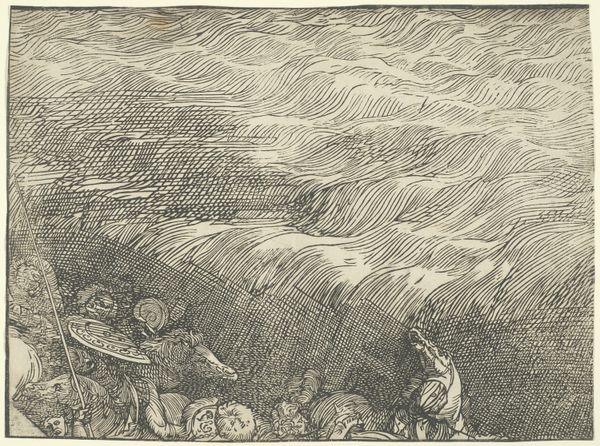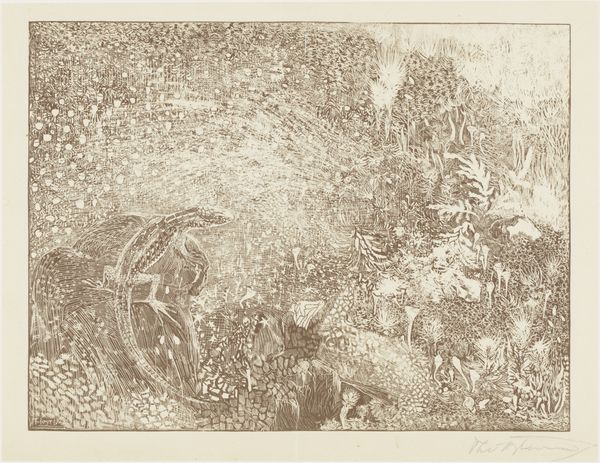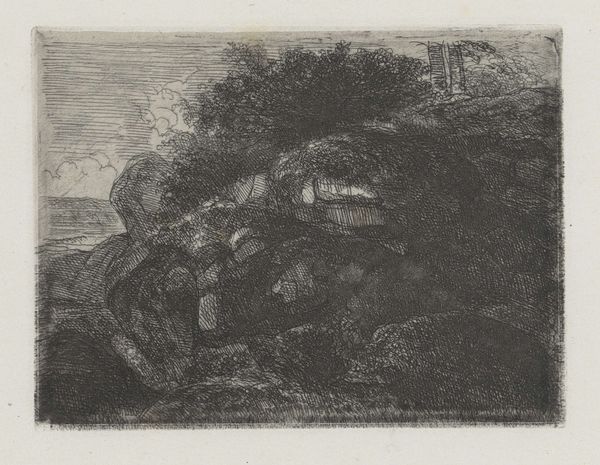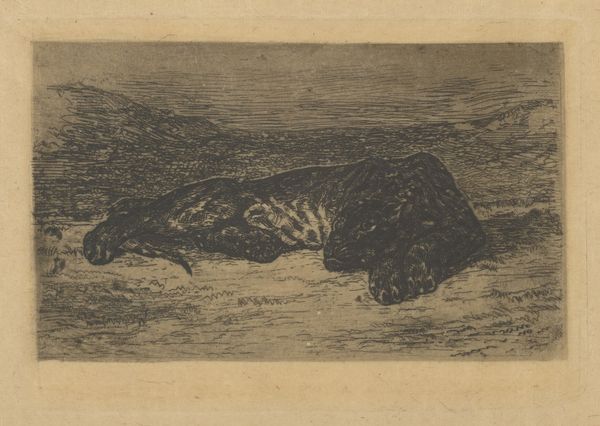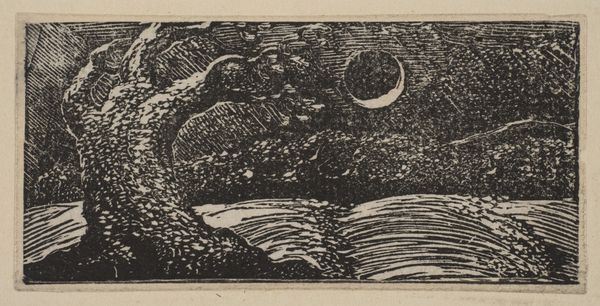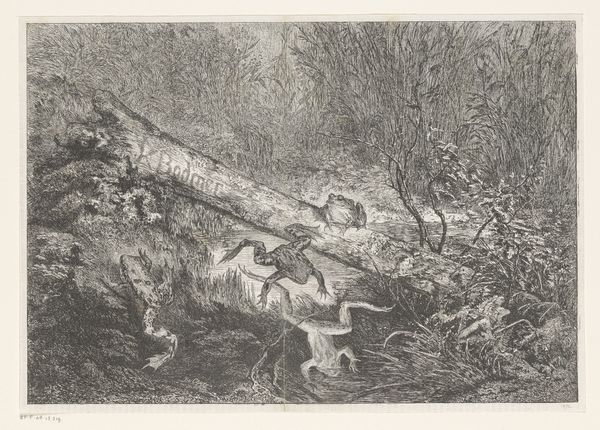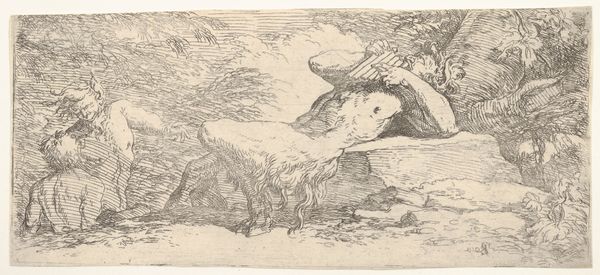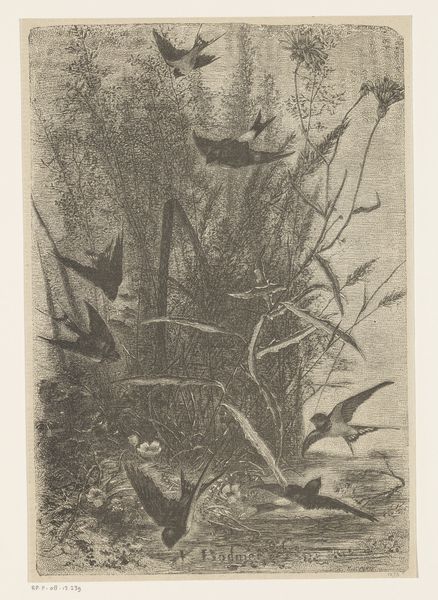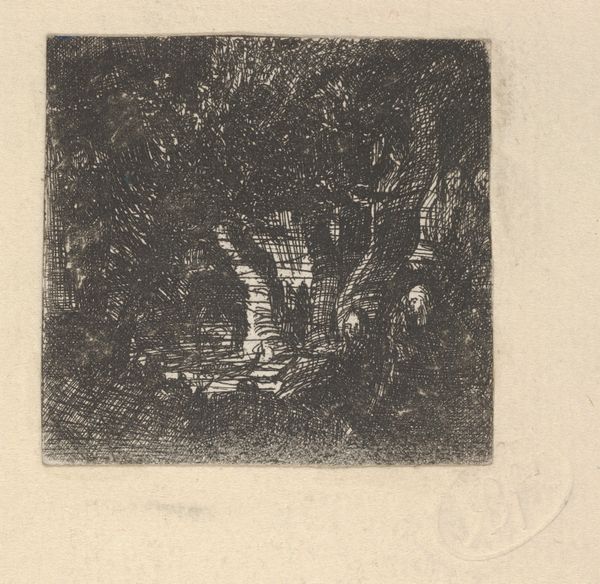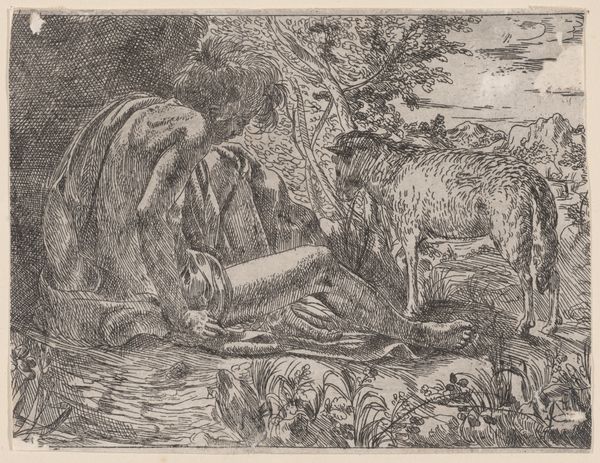
print, etching
# print
#
etching
#
little shading
#
landscape
#
romanticism
Dimensions: plate: 10.9 x 16 cm (4 5/16 x 6 5/16 in.) sheet: 26.8 x 35.8 cm (10 9/16 x 14 1/8 in.)
Copyright: National Gallery of Art: CC0 1.0
Alexandre Calame made this print of Trees Overhanging a Pond in the 19th century. Prints like these, made in Switzerland, were part of a booming market for landscape images, fuelled by new attitudes to nature. Thinkers like Rousseau encouraged people to see nature as a source of spiritual and emotional nourishment, rather than just an economic resource. Institutions of art encouraged artists like Calame to capture these sublime landscapes. The etching technique allowed Calame to create intricate details of foliage and water, and the small size of the print made it affordable for a wide range of buyers. The image also suggests the social hierarchies of the time. The dense, overgrown trees evoke the wildness of nature, yet the composition is carefully controlled, reflecting the desire to tame and order the natural world. As historians, we can look at prints like this to understand how ideas about nature and society were circulating in 19th-century Europe. By exploring archives, exhibition records, and critical reviews, we can uncover the complex social and cultural meanings embedded in this seemingly simple image.
Comments
No comments
Be the first to comment and join the conversation on the ultimate creative platform.
